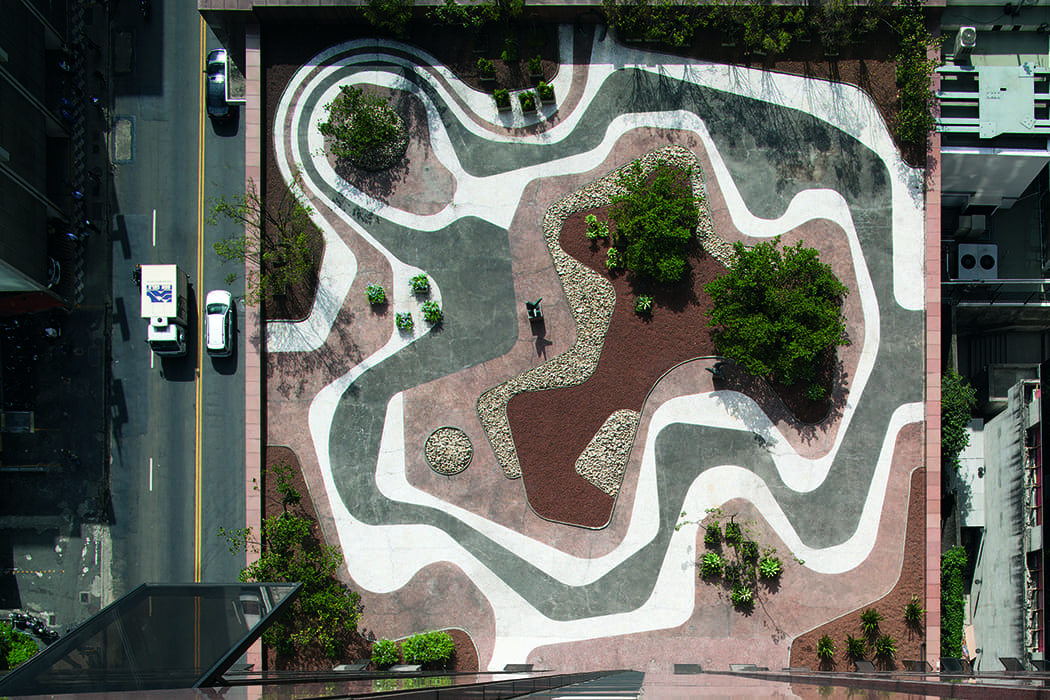Roberto Burle Marx: Brazilian Modernist Opens May 6 at the Jewish Museum

First U.S. Exhibition on Prominent 20th Century Landscape Architect to Focus on Full Range of His Artistic Output
New York, NY – From Copacabana Beach in Rio de Janeiro to Biscayne Boulevard in Miami Beach, throughout Brazil and around the world, the innovative and prolific work of Roberto Burle Marx (1909–1994) has made him one of the most prominent landscape architects of the twentieth century. From May 6 through September 18, 2016, the Jewish Museum will present the first New York City exhibition to focus on Burle Marx in more than two decades, and the first exhibition in the United States to showcase the full range of his artistic output. Roberto Burle Marx: Brazilian Modernist will explore the richness and breadth of the artist’s oeuvre through nearly 150 works – from landscape architecture to painting, from sculpture to theater design, and from tapestries to jewelry. Following its New York presentation, the exhibition will travel to Berlin, Germany and Rio de Janeiro, Brazil.
The son of a German-Jewish father and a Brazilian mother of French, Portuguese, and Dutch descent, Burle Marx embraced modernism in the early 1930s, as the movement was taking hold in his country among artists and intellectuals. Using abstraction as his guiding principle, and grand sweeps of voluminous local foliage and colorful flora, Burle Marx devised a new form of landscape expression, revolutionizing garden design. In the late nineteenth and early twentieth centuries, gardens in Brazil had primarily followed French models, featuring a symmetrical layout and imported flora. Burle Marx did away with symmetry and advocated for the use of native plants, making numerous incursions into the Brazilian jungle throughout his lifetime in search of rare species. He was a horticulturist and a pioneering ecologist who only used plants suitable to the environment and was one of the first to speak out against the destruction of the Amazon rainforest. Throughout a more than sixty-year career, Burle Marx designed over 2,000 gardens worldwide and discovered close to fifty plant species, while never ceasing to paint, sculpt, and design textiles. He was also a talented baritone, and a consummate cook – a Renaissance man of the twentieth century bursting with creativity and ingenuity.
Famous projects range from his mosaic pavement design for Rio de Janeiro’s Copacabana Beach seaside avenue to the multitude of gardens that embellish Brasilia, the capital city of Brazil, founded in 1960 and featuring buildings by famed architect Oscar Niemeyer. Although Burle Marx’s landscape design work is known worldwide, the artist’s work in other media remains little known. The exhibition will highlight his accomplishments as a landscape architect, painter, sculptor, designer of textiles, jewelry, theater sets and costumes, as well as his avid collecting of Brazilian popular and religious art and his groundbreaking efforts as an ecologist. Roberto Burle Marx: Brazilian Modernist will also explore the world of his beloved Sítio, his former estate which houses his collection of tropical and semitropical plants, one of the largest in the world.
Roberto Burle Marx’s global influence and legacy will also be examined through the work of a number of international contemporary artists whom he has inspired including Venezuelan Juan Araujo, Brazilians Beatriz Milhazes and Paloma Bosquê, French Dominique Gonzalez-Foerster, Italian Luisa Lambri, and Americans Nick Mauss, and experimental musician Arto Lindsay.
Roberto Burle Marx: Brazilian Modernist will demonstrate the versatility of the artist’s extraordinary talents, from his earliest forays into landscape architecture to never-before-exhibited designs for synagogues and other Jewish sites he created late in life. For many visitors the exhibition will be their first introduction to the artist, allowing them to discover Burle Marx’s full oeuvre. For others who are familiar with his work as a landscape architect, the exhibition will provide a comprehensive view into Burle Marx’s multifaceted career and the relationship between his activities as a garden designer and his other artistic practices. Above all, it will clearly convey that Burle Marx’s art and legacy live on, beautifying the lives of many and continuing to engage artists today.
Roberto Burle Marx: Brazilian Modernist is organized by Jens Hoffmann, Deputy Director, Exhibitions and Public Programs, and Claudia J. Nahson, Morris and Eva Feld Curator, with Rebecca Shaykin, Leon Levy Assistant Curator, The Jewish Museum.
About the Exhibition Tour
Following its New York City showing, the exhibition will travel to: Deutsche Bank KunstHalle, Berlin, Germany (July 7 – October 8, 2017) and Museu de Arte do Rio, Rio de Janeiro, Brazil (November 2017 – March 2018).
About the Catalogue
In conjunction with the exhibition, the Jewish Museum and Yale University Press are publishing a 224-page catalogue by Jens Hoffmann and Claudia J. Nahson. This beautifully illustrated and groundbreaking publication covers the full range of Burle Marx’s artistic output, as well as his remarkable home, an abandoned estate that he transformed into his office, workshop, gallery, and living space. The enduring influence of Burle Marx’s work is also explored through interviews with seven contemporary artists exemplifying the extent to which his work continues to be a source of inspiration. Featuring 185 color and 20 black-and-white illustrations, the hardcover book will be available worldwide and at the Jewish Museum’s Cooper Shop for $50.00.
Support
Roberto Burle Marx: Brazilian Modernist is made possible by Deutsche Bank, The Emanuel and Riane Gruss Charitable Foundation, and an anonymous donation in memory of Curtis Hereld. Additional support is provided by the Leon Levy Foundation and the Graham Foundation for Advanced Studies in the Fine Arts.
Press contacts
Anne Scher, Molly Kurzius, or Alex Wittenberg
The Jewish Museum
212.423.3271 or [email protected]
Andrea Schwan
Andrea Schwan Inc.
917.371.5023 or [email protected]
